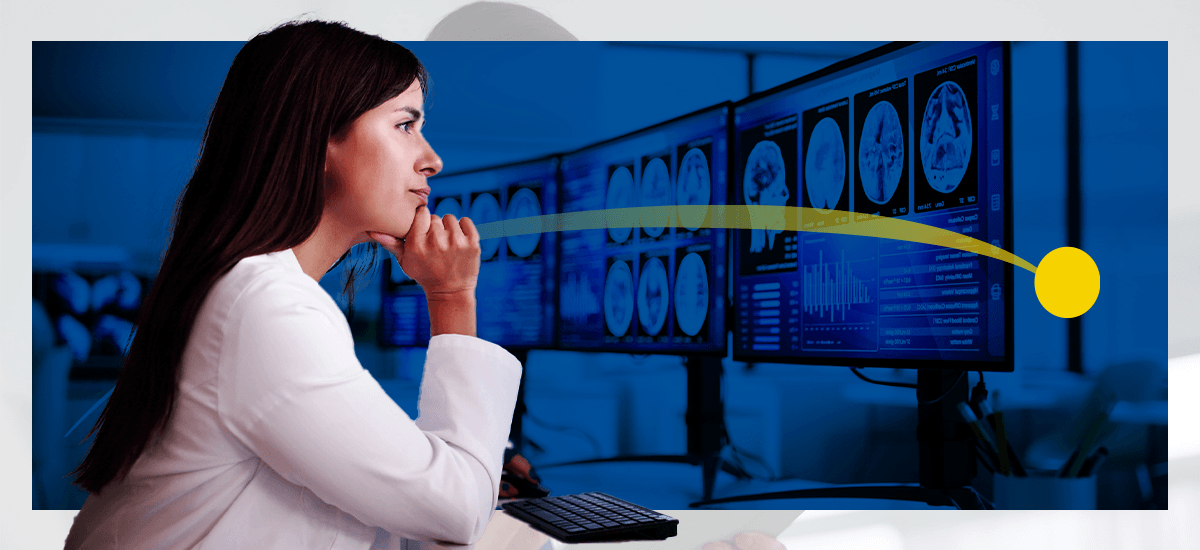What Is Dictation in Radiology? Radiology Dictation Software Explained!

Radiology dictation software is a game-changer for radiologists looking to streamline their operations and note-taking processes.
What Is Dictation in Radiology?
With dictation, radiologists dictate their observations into a device's microphone as they review images, and software transcribes what they say into digital written notes. Radiologists can view and edit the dictated notes and then finalize them, sharing them with patients or other health care providers as needed.
How Does Radiology Dictation Software Work?
If you've used speech-to-text functions on your phone or computer, you know how basic dictation works, taking spoken word and turning it into text. Radiology-specific dictation software can feature advanced technology, like artificial intelligence, to understand relevant medical jargon and terminology. The software can comprehend the context of what the radiologist is saying because it's been trained on a database of diagnostic and anatomical phrases. Some advanced options can even adapt to a radiologist's speech patterns, recognizing commonly used phrases and implementing them for consistency.
Software specific to the medical industry will also be more likely to adhere to privacy laws, like the Health Insurance Portability and Accountability Act (HIPAA). This compliance helps keep radiology practices in line with state and federal requirements.
Dictation software can integrate with radiology viewer solutions — radiologists can review images as they dictate what they're seeing using attached software.
Benefits of Radiology Dictation Software
The key advantage of radiology voice recognition software is the ability to avoid manual data entry. Other benefits include improvements to:
- Accuracy: Making typos or using non-specialized dictation software can lead to errors that may go unnoticed. Advanced technology recognizes common radiology terms to avoid documenting incorrect words by mistake.
- Documentation quality: Dictation software improves how radiologists take notes and note quality. Notes are accurate and consistent, which improves documentation, and it's much faster to take detailed reports.
- Communication: With accurate notes, radiologists can more effectively communicate their findings with patients and other practitioners. It's also easier to quickly complete and share reports.
- Efficiency: It's much more efficient for radiologists to speak their observations and findings into software, focusing their energy on what they're seeing instead of typing and ensuring everything they wrote is correct. Hands-free note-taking with integrated technology is also more efficient because radiologists won't need to switch between apps.
- Operations: When radiologists save time and energy on taking notes, they can focus on what matters more, like interpreting images, making diagnostic decisions and giving patients more attention.
- Patient outcomes: All these benefits help radiologists more effectively treat patients. Consistent reports let practitioners easily see changes or improvements in patient health over time. Patients may also be able to get results more quickly due to improved efficiency and communication.
Integrate Radiology Dictation Software With Solutions From Candelis
Innovative radiology management software from Candelis allows you to integrate voice attachments for dictation support. Streamline how you collaborate across facilities with dictation capabilities combined with our fast image routing, storage and viewing. Get in touch with questions or request a free demo today.
- Log in to post comments
